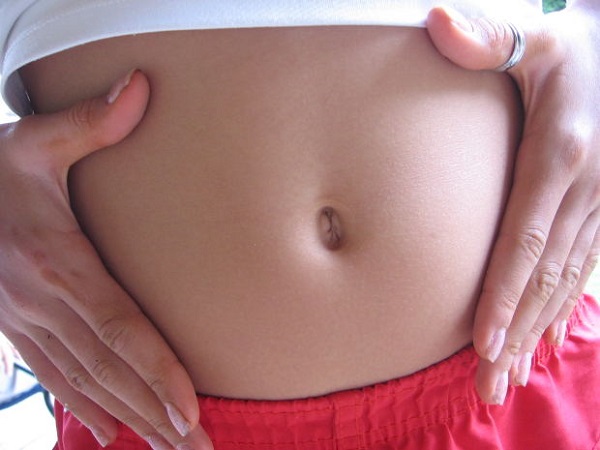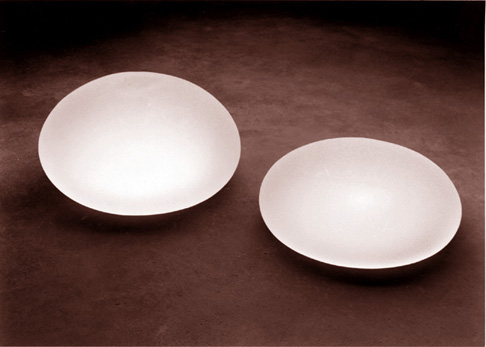Bilateral breast augmentation is the process of enhancing both breasts. This is the counterpart of another breast augmentation procedure named unilateral process, wherein the surgeon only operates on one breast. Women who would want to improve the structure and size of their breasts are mostly going for a bilateral procedure.
The 2 Kinds Of Implants
Various types of implants exist in the world of bilateral breast augmentation. However, among all, there are two, which are widely known implants around the globe. These common types of implants are saline and silicone.
1. Saline Implants
 This kind of implants has strong covering and the surgeon fills it with sterile saltwater solution.
This kind of implants has strong covering and the surgeon fills it with sterile saltwater solution.
There are times when they are pre-filled. There are also some instances where the surgeon can fill it through a valve after it insertion in a patient’s breasts.
- Advantages
Saline implants have long history of being safe. The body safely absorbs and excretes the saline solution. This is possible due to the fact that saline is similar to some body fluids.
- Disadvantages
Saline implants also have a few disadvantages. Experts say that saline implants do rupture earlier than other types of implants. Apart from this, it is more prone to wrinkling or folding. The feel is not as natural as silicone implants and it does not come in a lot of sizes and shapes.
 2. Silicone Gel Implants
2. Silicone Gel Implants
Silicone fills this implant to maintain its consistency and firmness. The surgeon pre-fills them before inserting them into the breasts.
Unlike the traditional silicone implant, silicone gel is firmer. It has longer life span compared to saline and it may stay inside the body without leakage risks.
- Advantages
Silicone gel implants have longer history of being safe. They are less likely to wrinkle or fold compared to other types of implants. Silicone gel is more of lifelike breasts and provides you with a natural feel as well. UK silicone gel implants possesses a textured surface. This lessens the chances of hardening due to capsular contracture.
- Disadvantages
A number of risks and complications may occur for patients who had silicone gel implants
 Other Implant Types
Other Implant Types
More implant types apart from the above have existed before. Some of those are soya bean oil-filled implants, hydrogel implants and PIP implants. These have become obsolete due to the huge amount of risk that they impose to the patients.
Incision Sites In Bilateral Breast Augmentation
Breast augmentation on both breasts has four common sites of incisions. This depends on the kind of method the surgeon uses, according to what the patient requests.
 Inframammary, Or Below The Breast. The place below the breast is the most common incision site due to inframammary type of breast enhancement or implantation.
Inframammary, Or Below The Breast. The place below the breast is the most common incision site due to inframammary type of breast enhancement or implantation.
This type of breast augmentation process is the most popular technique among surgeons. The surgical method is the easiest to learn and has simple steps.
Despite its biggest disadvantage, which is the visibility of scar on the incision site, many women are going for this kind of procedure.
Periareola Or Around The Nipples Or Areola. The incision is particularly located on the lower edge of the areola. Periareolar breast augmentation process makes a half-circle incision on this part.
Transaxillary Or Under The Armpits. The incision is in the natural folds of the skin in the armpit. Transaxillary breast augmentation method leaves no scars on the breast, but in the armpits, instead.
This is a good way to have no scarring for the breasts, since most people don’t pay attention to the transaxillary part.
 Transumbilical Or Through The Umbilical Cavity. Another incision site for bilateral breast augmentation is the belly button. With a transumbilical breast augmentation procedure or TUBA, only a small incision is made on the umbilical cavity. This process has faster recovery time, lesser risks and scar-free.
Transumbilical Or Through The Umbilical Cavity. Another incision site for bilateral breast augmentation is the belly button. With a transumbilical breast augmentation procedure or TUBA, only a small incision is made on the umbilical cavity. This process has faster recovery time, lesser risks and scar-free.
Complications Of Bilateral Breast Augmentation
Bilateral breast augmentation is a major surgical procedure. The following complications of different levels have a chance of taking place:
 Rupture Or Deflation Of The Implant. Ruptured breast implants may result to pain and unwanted changes in the shape of the breasts.
Rupture Or Deflation Of The Implant. Ruptured breast implants may result to pain and unwanted changes in the shape of the breasts.
There are times when a rupture may happen.
Patients don’t always notice it.This is a silent rupture, where free silicone may get trapped in the tissues that surround the implant. It can lead to pain, soreness and swelling.
Other complications include abnormal change of shape, lumps and softening or hardening of the impacted breast.
- Capsular Contracture. This is a natural response of the body to foreign materials that are implanted into the body. Due to shrinkage of the scar tissue, this will tighten and squeeze the implanted material.
This would lead to pain, hardening of breasts and discomfort. Capsular contracture is an unavoidable scenario and patients should expect this to exist shortly after the breast implant procedure.
 Infections. Due to this invasive surgery and open wounds left after the procedure, patients may be vulnerable to infections. Infection causes further complications and a slow or painful healing process. This can be a result of the improper care of wounds. Surgeons provide antibiotics in order to prevent this particular complication.
Infections. Due to this invasive surgery and open wounds left after the procedure, patients may be vulnerable to infections. Infection causes further complications and a slow or painful healing process. This can be a result of the improper care of wounds. Surgeons provide antibiotics in order to prevent this particular complication.
 Double Bubble Breast Deformity. This complication has many types, but generally, it pertains to an obvious breast shape abnormality.
Double Bubble Breast Deformity. This complication has many types, but generally, it pertains to an obvious breast shape abnormality.
This condition may indicate that the surgeon did not completely sew down the breast pocket or breast tissue. Another reason is that the breast tissues may have slid off the implant.
Capsular contracture and submammary breast implants may have caused this, as well.
- Symmastia. This is a rare condition wherein breasts merge together without a separation between them. This condition may need further operation by the plastic surgeon, which leads a patient to further pain and complications.
 Bilateral breast augmentation is a general surgical procedure. It involves enhancement procedures done in both breasts. The process has many types, implant options, risks and advantages. Patients must be aware of all of them in order to manage their expectations once they have decided to undergo their breast augmentation procedure.
Bilateral breast augmentation is a general surgical procedure. It involves enhancement procedures done in both breasts. The process has many types, implant options, risks and advantages. Patients must be aware of all of them in order to manage their expectations once they have decided to undergo their breast augmentation procedure.

 2. Silicone Gel Implants
2. Silicone Gel Implants Other Implant Types
Other Implant Types Rupture Or Deflation Of The Implant. Ruptured breast implants may result to pain and unwanted changes in the shape of the breasts.
Rupture Or Deflation Of The Implant. Ruptured breast implants may result to pain and unwanted changes in the shape of the breasts. Infections. Due to this invasive surgery and open wounds left after the procedure, patients may be vulnerable to infections. Infection causes further complications and a slow or painful healing process. This can be a result of the improper care of wounds. Surgeons provide antibiotics in order to prevent this particular complication.
Infections. Due to this invasive surgery and open wounds left after the procedure, patients may be vulnerable to infections. Infection causes further complications and a slow or painful healing process. This can be a result of the improper care of wounds. Surgeons provide antibiotics in order to prevent this particular complication. Double Bubble Breast Deformity. This complication has many types, but generally, it pertains to an obvious breast shape abnormality.
Double Bubble Breast Deformity. This complication has many types, but generally, it pertains to an obvious breast shape abnormality.